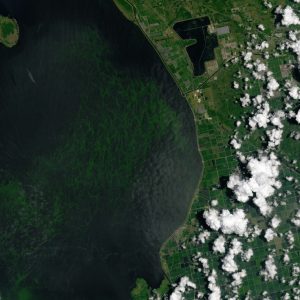The Stream, July 7: High And Low-Tech Solutions To Address Drought
The Global Rundown
The agricultural sectors in both Canada and Namibia are suffering as a result of ongoing drought. Computers in California and genetically selected beans in Central America are being employed to improve water efficiency. Mexico City should soon be the recipient of numerous simple, but effective rainwater systems. Meanwhile, a Maine teenager is building biodegradable stream cleaning buoys in her parents’ basement. In Bangladesh, previously unseen water shortages are affecting even the smallest communities.
“Mother tells us not to take too much water and not to waste. It is very painful to get water. For this, we sometimes even resist quenching our thirst.” — 15-year-old Seema, a resident of Mondumala, one of Bangladesh’s many small, drought stricken districts. Once a nation of excess water, shifting monsoon patterns, rising temperatures and numerous groundwater-depleting wells are causing unprecedented scarcity. (The Guardian)
By The Numbers
729,134 people Number currently suffering from food insecurity in Namibia, according to a recent government report. This figure is nearly 360,000 higher than the country’s agriculture ministry predicted last year. Widespread droughts have strongly affected the agricultural sector, leading to crop and milk shortages, a spike in food prices and a drastic reduction in farm employment. The report indicates the government will need to spend more than $44 million on drought relief between August 2016 and March 2017, the start of its next financial year. The Namibian
No. 3 Mexico City’s ranking on the list of cities facing extreme water crises, despite receiving five annual months of rainfall and frequent flooding. Unfortunately, the municipality draws around 70 percent of its water from aquifers, more than can be naturally recharged. To combat the problem, the local government has agreed to let Isla Urbana, a team of engineers, designers and sociologists, install roughly 1,000 community rainwater harvesting systems throughout the city to reduce dependency on unsustainable aquifers. The Guardian
60 percent Amount of the world’s bean crop — a source of sustenance for more than 400 million people in Africa and Latin America alone — currently affected by drought. However, a recently released study from Spain’s Universitat Autònoma de Barcelona and Colombia’s International Center for Tropical Agriculture suggests the way forward is through propagating carefully selected “water saver” and “water spender” bean genotypes. The former is smaller and conserves water, while the latter is heartier and is expected to produce more grains, even in drought conditions. Phys.org
Science, Studies, And Reports
IBM’s Watson, an artificial neural network, is now being employed to determine water use efficiency among California utilities’ customers. By reviewing hundreds of thousands of aerial and satellite photos, the machine learning system is identifying features on individual parcels of land which would likely consume water. This information, when combined with census, weather and other data, is being used by utility companies to determine if current water usage on a property matches the system’s predicted water demand. ARS Techinca
Using simple household items, wood pulp and algae derivatives, Maine teenager Paige Brown has created buoys which can filter E. coli bacteria and absorb detrimental phosphorus from stormwater retention ponds. An excess of phosphorus in water systems has been directly linked to toxic algae blooms, which can decimate local ecosystems. After being used, the biodegradable buoys, which cost about $0.04 a piece, can be planted to supply plants with a ready source of needed phosphorus. TEDX
On The Radar
A recently issued Agriculture and Agri-Food Canada report states that parts of Ontario, including Ottawa and Toronto, are officially in a severe drought. According to the Ontario Federation of Agriculture, the lack of rain has jeopardized the province’s corn and soybean crops. The National Post
Staff of the U.S. Capitol’s Cannon House Office Building are now being offered no-cost blood tests, following the revelation that the building’s water fountains may have been contaminated by lead for as long as nine months. A statement from the Architect of the Capitol’s Office indicates an investigation is underway to determine the source of the lead. The Weather Channel
Circle of Blue contributor
Nick is interested in the social and political instability caused by growing global resource scarcity. He is also the director of communication at On the Ground, an international aid and development NGO that supports sustainable community development in farming regions.




